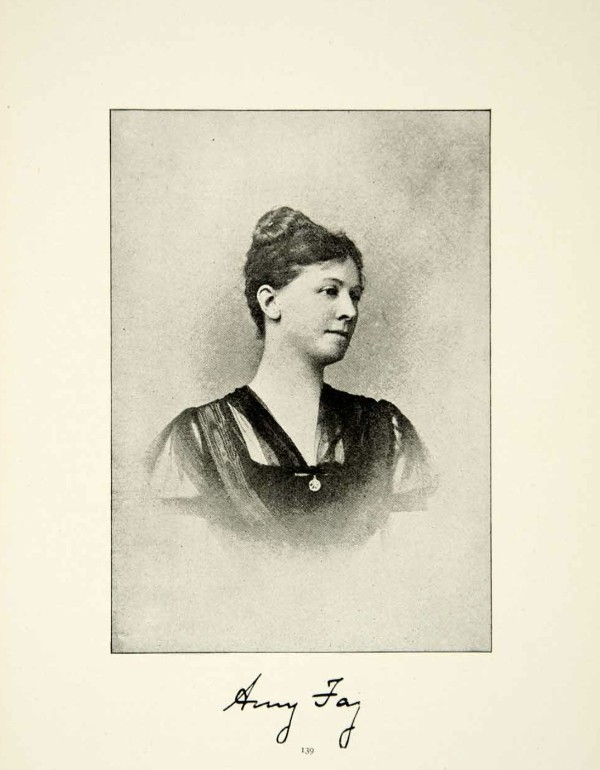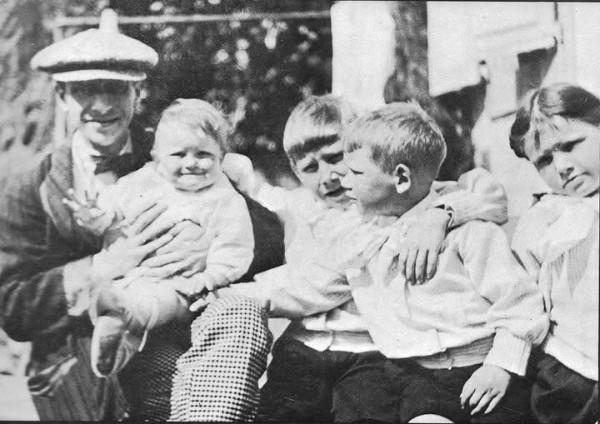One of the major difficulties of studying the Holocaust is understanding its sheer scale. The human brain isn’t built to process what the murder of millions of people really means.
However, by zeroing in and looking at individual stories, we can maybe start to understand what the Holocaust was and put faces to a small portion of the human suffering.
Although it’s important to remember the millions who died, it’s also important to remember the survivors, who had to figure out how to go on with their lives after witnessing the genocide.
Among those who endured the unimaginable horrors of the Nazi ghettos and concentration camps, who then lived to tell about it, were three remarkable violinists: Sandor Braun, Helena Dunicz-Niwińska, and Abram Merczynski.
Today, we’re looking at their stories and how, despite the brutal persecution and dehumanisation that they endured, these three artists found refuge in music, not just during wartime, but for the rest of their lives.
Sandor Braun
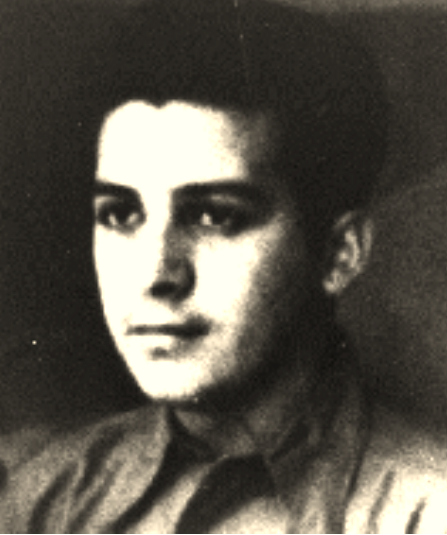
Sandor Braun
Braun was born in 1930 in Cristuru Secuiesc, Romania, the fourth of six children.
When he was just a toddler, a babysitter took him into the woods. While the babysitter took a nap, Braun slipped away. He was saved by the Romani people, and three days later, he returned to his parents.
During his adventure, he fell in love with the violins he’d heard the itinerant musicians playing. His parents, grateful that he had survived his time in the forest, gave him a tiny violin for his birthday.
He became obsessed with playing and practising constantly.
In May 1944, when he was thirteen, he was deported to Auschwitz and then to the Kochendorf concentration camp. There, he witnessed his father being beaten to death. Later, he was transferred to Dachau.
One day in Dachau, a guard came into the barracks holding a violin and asking if anyone could play it, promising additional food to whoever could. Three prisoners came forward, including Braun.
The first player displeased the guard, and he was killed with an iron pipe. The second was too terrified to play and was also killed. Braun took the violin and played The Beautiful Blue Danube. The choice pleased the guard, and he earned the extra ration. Braun later believed the violin saved his life.
While in Dachau and doing manual labour, he would play the Mendelssohn concerto in his head. “That gave me strength,” he said in a later interview.
Violinist Yehudi Menuhin playing an excerpt from the Mendelssohn violin concerto, 1947
In the spring of 1945, Dachau was liberated. Sandor Braun relocated to the United States and became a violinist and composer.
While imprisoned, he wrote a piece of music in his head. He wrote it down decades later, calling it “Symphony of the Holocaust.”
Los Angeles Jewish Symphony performs Symphony of the Holocaust by Sandor (Shony) Alex Braun
Helena Dunicz-Niwińska
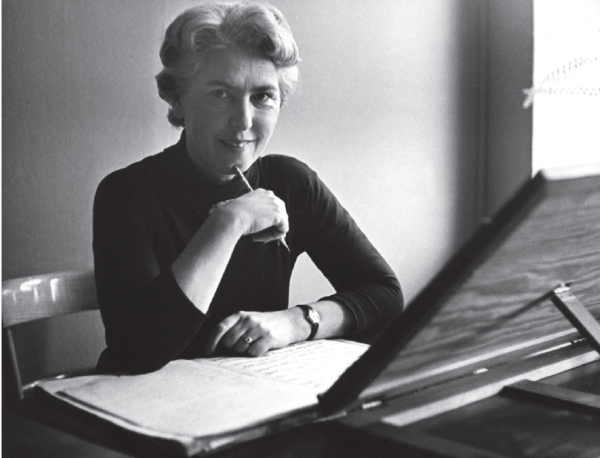
Helena Dunicz-Niwińska
Helena Dunicz-Niwińska was born in Vienna in 1915. When she was a child, her family relocated to present-day Lviv in Ukraine.
She began playing the violin in 1925 and studied violin pedagogy in the late 1930s.
Both the Nazis and the Soviets invaded Poland and Ukraine in 1939. The Soviets took control of Lviv, but in the summer of 1941, control of the city passed to the Germans. The city’s Jewish population was concentrated in a ghetto.
In early 1943, when she was 27, Dunicz-Niwińska was arrested and spent nine months in prison. That fall, she was transferred to Auschwitz.
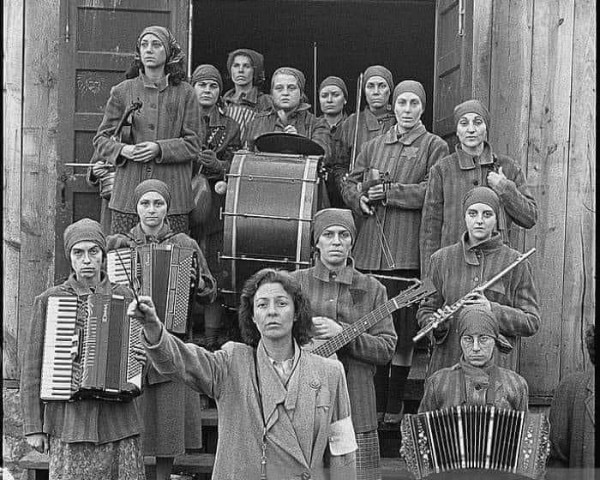
Auschwitz Women’s Orchestra
At Auschwitz, she joined the now-famous Women’s Orchestra of Auschwitz, led by Gustav Mahler’s niece, violinist Alma Rosé.
A YouTube documentary about the Auschwitz Women’s Orchestra
This ensemble was made up mainly of amateur women musicians who played a wide array of instruments, including violin, accordion, flute, guitars, and mandolins. They played daily as prisoners departed for and arrived from their work, as well as at weekend concerts for Nazi officials.
Rosé told the women that they would “survive together or die together.” All except two of the orchestra members survived. Tragically, however, Rosé died at the camp in 1944, possibly of food poisoning.
In January 1945, Dunicz-Niwińska was transferred to Ravensbrück. She was living in the subcamp of Neustadt-Glewe when the war ended.
After the war, she moved to Kraków, where she ultimately accepted a leadership role as an editor of musical publications at the Polish Music Publishers. She also translated a variety of music-related material.
When she was 90, she wrote a memoir called One of the Girls in the Band about her time in the orchestra. “I was just a small cog which survived, in spite of being weak. One thing is certain: if not for the violin, I would not have survived,” she wrote in the introduction.
She died in the summer of 2018, a month before her 103rd birthday.
Abram Merczynski
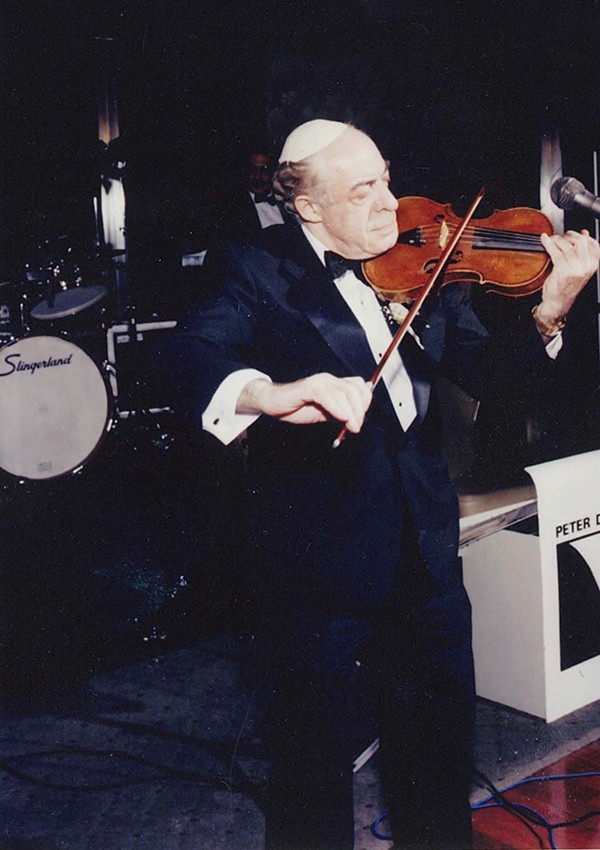
Abram Merczynski
Abram Merczynski was born in 1923 in Łódź, Poland, the third of six children. His family was poor, and his parents made their living selling animal feed. All were observant Jews.
At the time, Łódź was thirty percent Jewish, sixty per cent Polish, and ten per cent German.
Disaster struck in September 1939 when the Nazis invaded Łódź. The German citizens of the city joined in attacks on the Polish and Jewish populations.
The Jews of Łódź were forced into a ghetto in April 1940. Inside the ghetto there were 117 factories where the population was forced to work. Merczynski worked in a communications equipment shop.
One of the few joys of life in the ghetto during this time was music-making. One of his brothers began an informal orchestra. Abram didn’t play himself, but he swore that if he survived the war, he would learn.
In August 1944, when Soviet forces were just sixty miles away, the residents of the ghetto were sent to Auschwitz. Merczynski’s brother suffocated on the train ride there, and his mother died in the gas chambers.
He was later transferred to a subcamp of Dachau called Kaufering. The guards were sadistic, and the conditions were horrific. Merczynski came down with both dysentery and typhus but somehow survived. His father died of starvation, and his brother nearly died by suicide.
After the camp was liberated, Merczynski moved to Munich before emigrating to the United States. While in Munich, he kept his promise to himself and began studying the violin. Six months later, he was playing a violin concerto by Bach.
David Oistrakh performs Bach’s A-minor violin concerto, 1961
He moved to the United States and became an entrepreneur, founding a company with one of his brothers that sold sweaters to department stores.
The violin and music became his great passions as he processed the trauma incurred by the war. He often played six to seven hours a day.
He married in 1961 and had two children. He shared his love of music with them, and eventually his grandchildren, too. All of his children and grandchildren began studying the violin, too.
He died at the age of 88 and continued to play until the end of his life.
His violin survives today as part of the Violins of Hope collection. You can read more about the project here.
For more of the best in classical music, sign up for our E-Newsletter


